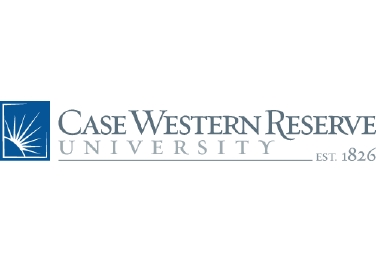Cisplatin and Radiation Therapy With or Without Triapine in Treating Patients With Previously Untreated Stage IB-IVA Cervical Cancer or Stage II-IVA Vaginal Cancer
| Status: | Active, not recruiting |
|---|---|
| Conditions: | Cervical Cancer, Cervical Cancer, Cervical Cancer, Cervical Cancer, Cervical Cancer, Cervical Cancer, Cervical Cancer, Cervical Cancer, Cervical Cancer, Cervical Cancer, Cervical Cancer, Cancer, Cancer, Cancer, Cancer, Cancer, Cancer, Women's Studies |
| Therapuetic Areas: | Oncology, Reproductive |
| Healthy: | No |
| Age Range: | 18 - Any |
| Updated: | 4/21/2016 |
| Start Date: | April 2013 |
Randomized Phase II Study of Intravenous 3-Aminopyridine-2-Carboxaldehyde Thiosemicarbazone (3-AP, Triapine® NSC #663249) Cisplatin-Radiochemotherapy Versus Intravenous Cisplatin-Radiochemotherapy in Women Diagnosed With Stage IB-IVA Cervical Cancer and Stage II-IVA Vaginal Cancer
This randomized phase II trial studies how well cisplatin and radiation therapy with or
without triapine work in treating patients with previously untreated stage IB-IVA cervical
cancer or stage II-IVA vaginal cancer. Drugs used in chemotherapy, such as cisplatin, work
in different ways to stop the growth of tumor cells, either by killing the cells, by
stopping them from dividing, or by stopping them from spreading. Radiation therapy uses high
energy x rays to kill tumor cells. Triapine may make tumor cells more sensitive to radiation
therapy. It is not yet known whether cisplatin and radiation therapy is more effective when
given with or without triapine in treating cervical or vaginal cancer.
without triapine work in treating patients with previously untreated stage IB-IVA cervical
cancer or stage II-IVA vaginal cancer. Drugs used in chemotherapy, such as cisplatin, work
in different ways to stop the growth of tumor cells, either by killing the cells, by
stopping them from dividing, or by stopping them from spreading. Radiation therapy uses high
energy x rays to kill tumor cells. Triapine may make tumor cells more sensitive to radiation
therapy. It is not yet known whether cisplatin and radiation therapy is more effective when
given with or without triapine in treating cervical or vaginal cancer.
PRIMARY OBJECTIVES:
I. To determine the posttherapy 3-month fludeoxyglucose F 18 (18F-FDG) positron emission
tomography (PET)/computed tomography (CT) complete metabolic response of
3-aminopyridine-2-carboxaldehyde thiosemicarbazone (3-AP) (triapine) radiochemotherapy.
SECONDARY OBJECTIVES:
I. Determining acute < 30 day adverse events of 3-AP radiochemotherapy by Common Terminology
Criteria for Adverse Events (CTCAE), version 4.
II. Determining the late >= 30 day adverse events of 3-AP radiochemotherapy by CTCAE version
4.
III. Determining post-therapy clinical response by Response Evaluation Criteria in Solid
Tumors (RECIST), version 1.1.
IV. Determining the progression-free interval of 3-AP radiochemotherapy. V. Determining
peripheral blood methemoglobin proportion before and after 3-AP infusion. (Optional)
OUTLINE: Patients are randomized to 1 of 2 treatment arms.
ARM I: Patients receive cisplatin intravenously (IV) over 90 minutes on days 2, 9, 16, 23,
and 30 of radiation therapy. Patients undergo external beam radiation therapy (EBRT) five
days a week for 5 weeks with a boost in week 6 followed by 5 sessions of high dose rate
(HDR) brachytherapy once or twice weekly beginning in week 4 or up to 2 sessions of low dose
rate (LDR) brachytherapy within 3 weeks of completion of EBRT.
ARM II: Patients receive triapine IV over 90-120 minutes on days 1, 3, 5, 8, 10, 12, 15, 17,
19, 22, 24, 26, 29, 31, and 33 of radiation therapy. Patients also receive cisplatin IV and
undergo EBRT and brachytherapy as in Arm I.
In both arms, treatment continues for up to 6 weeks in the absence of disease progression or
unacceptable toxicity.
After completion of study treatment, patients are followed up at 1, 3, and 6 months.
I. To determine the posttherapy 3-month fludeoxyglucose F 18 (18F-FDG) positron emission
tomography (PET)/computed tomography (CT) complete metabolic response of
3-aminopyridine-2-carboxaldehyde thiosemicarbazone (3-AP) (triapine) radiochemotherapy.
SECONDARY OBJECTIVES:
I. Determining acute < 30 day adverse events of 3-AP radiochemotherapy by Common Terminology
Criteria for Adverse Events (CTCAE), version 4.
II. Determining the late >= 30 day adverse events of 3-AP radiochemotherapy by CTCAE version
4.
III. Determining post-therapy clinical response by Response Evaluation Criteria in Solid
Tumors (RECIST), version 1.1.
IV. Determining the progression-free interval of 3-AP radiochemotherapy. V. Determining
peripheral blood methemoglobin proportion before and after 3-AP infusion. (Optional)
OUTLINE: Patients are randomized to 1 of 2 treatment arms.
ARM I: Patients receive cisplatin intravenously (IV) over 90 minutes on days 2, 9, 16, 23,
and 30 of radiation therapy. Patients undergo external beam radiation therapy (EBRT) five
days a week for 5 weeks with a boost in week 6 followed by 5 sessions of high dose rate
(HDR) brachytherapy once or twice weekly beginning in week 4 or up to 2 sessions of low dose
rate (LDR) brachytherapy within 3 weeks of completion of EBRT.
ARM II: Patients receive triapine IV over 90-120 minutes on days 1, 3, 5, 8, 10, 12, 15, 17,
19, 22, 24, 26, 29, 31, and 33 of radiation therapy. Patients also receive cisplatin IV and
undergo EBRT and brachytherapy as in Arm I.
In both arms, treatment continues for up to 6 weeks in the absence of disease progression or
unacceptable toxicity.
After completion of study treatment, patients are followed up at 1, 3, and 6 months.
Inclusion Criteria:
- Patients are eligible with untreated squamous, adenosquamous, or adenocarcinoma
cancers of stage IB2-IVA carcinoma of the uterine cervix or stage II-IVA vaginal
carcinoma not amenable to curative surgical resection; pathological verification of
diagnosis must be obtained and recorded; the presence or absence of para-aortic lymph
node metastasis will be based on pre-therapy 18F-FDG PET/CT; if the baseline 18F-FDG
PET/CT identifies hypermetabolic para-aortic disease, such patients will not be
eligible for participation; the patient must be able to tolerate the requirements for
18F-FDG PET/CT scanning
- Patients must have a Gynecologic Oncology Group (GOG) performance status of 0, 1, or
2
- Patients must have a life expectancy of greater than 20 weeks
- Absolute neutrophil count > 1,500/uL
- Platelets > 100,000/uL
- Hemoglobin > 10 g/dL
- Total bilirubin < 2.0 mg/dL
- Aspartate aminotransferase (AST) (serum glutamic oxaloacetic transaminase
[SGOT])/alanine aminotransferase (ALT) (serum glutamate pyruvate transaminase [SGPT])
< 2.5 X institutional upper limit of normal
- Creatinine =< 1.5 mg/dL to receive weekly intravenous cisplatin*; *patients whose
serum creatinine is between 1.5 and 1.9 mg/dL are eligible for cisplatin if the
estimated creatinine clearance is >= 30 ml/min; for the purpose of estimating the
creatinine clearance, the formula of Cockcroft and Gault for females should be used
- All patients must have measurable cervical cancer or vaginal cancer disease;
measurable disease is defined as at least one lesion that can be accurately measured
in at least one dimension (longest diameter to be recorded); each lesion must be >=
40 mm when measured preferably by clinical exam or alternatively by computed
tomography (CT), magnetic resonance imaging (MRI)
- Patient is not pregnant; women of child-bearing potential and men must agree to use
adequate contraception (hormonal or barrier method of birth control; abstinence)
prior to study entry and for the duration of study participation; should a woman
become pregnant or suspect she is pregnant while participating in this study, she
should inform her treating physician immediately; if in the investigator's opinion
the patient is of child-bearing age, a negative urine pregnancy test must be resulted
within 7 days before initiating protocol therapy; women should not breast feed during
therapy (or has agreed to discontinue breastfeeding before initiation of therapy)
- Patients must have an ability to understand and willingness to sign a written
informed consent document
Exclusion Criteria:
- Patients with other active invasive malignancies are excluded; patients with prior
malignancies are excluded (except non-melanoma skin cancer or prior in situ carcinoma
of the cervix; patients with other invasive malignancies who had [or have] cancer
present within the last five years); patients are excluded if they have received
prior pelvic radiotherapy for any reason that would contribute radiation dose that
would exceed tolerance of normal tissues
- Patients who are receiving any other investigational agents
- Patients with known brain metastases should be excluded from this clinical trial
- History of allergic reactions attributed to compounds of similar chemical or biologic
composition to 3-AP (triapine) or other agents used in study
- Uncontrolled intercurrent illness including, but not limited to, symptomatic
congestive heart failure, unstable angina pectoris, myocardial infarction within six
months of protocol initiation, cardiac arrhythmia, known inadequately controlled
hypertension, significant pulmonary disease including dyspnea at rest, patients
requiring supplemental oxygen, or poor pulmonary reserve; proteinuria or clinically
significant renal function impairment (baseline serum creatinine > 2 mg / dL), or
psychiatric illness/social situations that would limit compliance with study
requirements are excluded
- Patient does not have uncontrolled diabetes mellitus (fasting blood glucose > 200
mg/dL)
- Patients with known glucose-6-phosphate dehydrogenase deficiency (G6PD) are excluded
due to an inability to administer the antidote for methemoglobinemia, methylene blue;
testing for G6PD is not required for study enrollment and optional
- Known human immunodeficiency virus (HIV)-positive patients receiving combination
antiretroviral therapy are ineligible; HIV testing is not required for study
enrollment and optional
We found this trial at
8
sites
Cleveland Clinic Foundation The Cleveland Clinic (formally known as The Cleveland Clinic Foundation) is a...
Click here to add this to my saved trials
Click here to add this to my saved trials
Click here to add this to my saved trials
Case Western Reserve Univ Continually ranked among America's best colleges, Case Western Reserve University has...
Click here to add this to my saved trials
Click here to add this to my saved trials
940 NE 13th St
Oklahoma City, Oklahoma 73190
Oklahoma City, Oklahoma 73190
(405) 271-6458

University of Oklahoma Health Sciences Center The OU Health Sciences Center is composed of seven...
Click here to add this to my saved trials
Click here to add this to my saved trials
Click here to add this to my saved trials

